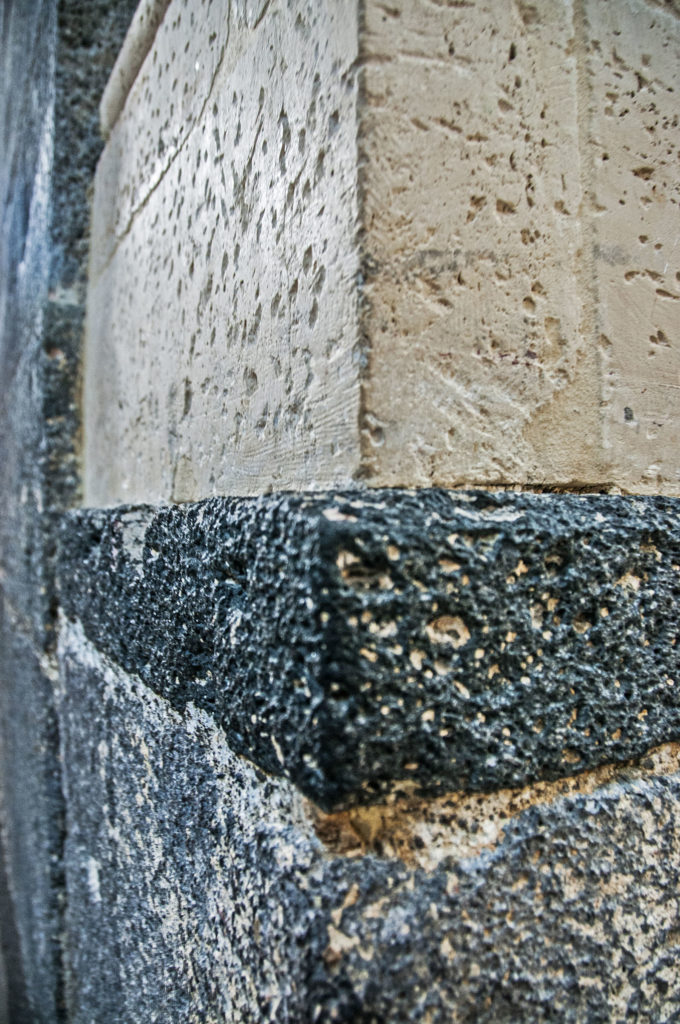 The church has an unbreakable bond with music.
The church has an unbreakable bond with music.
The cathedral of St. Agatha is not only home to a magnificent organ, now located above the entrance, but it also houses the remains of the great composer Vincenzo Bellini (1801-1835). Though he died very young, he was recognised as one of the greatest composers of his time.
The artist’s tomb was created in 1876 by Giovanni Battista Tassara and is located next to one of the pillars of the right nave.
 Marble and lava stone, which have very different physical and aesthetic characteristics, are the two most common materials in the construction of the Cathedral of Sant’Agata (St. Agatha).
Marble and lava stone, which have very different physical and aesthetic characteristics, are the two most common materials in the construction of the Cathedral of Sant’Agata (St. Agatha).
This contrast, which is already perceptible to the naked eye, becomes immediately clear when touching the materials: the marble is smooth and cold, and the lava stone porous and warm.
The cathedral of Sant’Agata (St. Agatha) is set in a truly unique environmental and architectural context. Its scenographic composition never fails to amaze.
Your gaze will meander through the domes, the multiple viewpoints offered by the square, and Etna in the background. Its unique beauty changes continuously according to your vantage point.